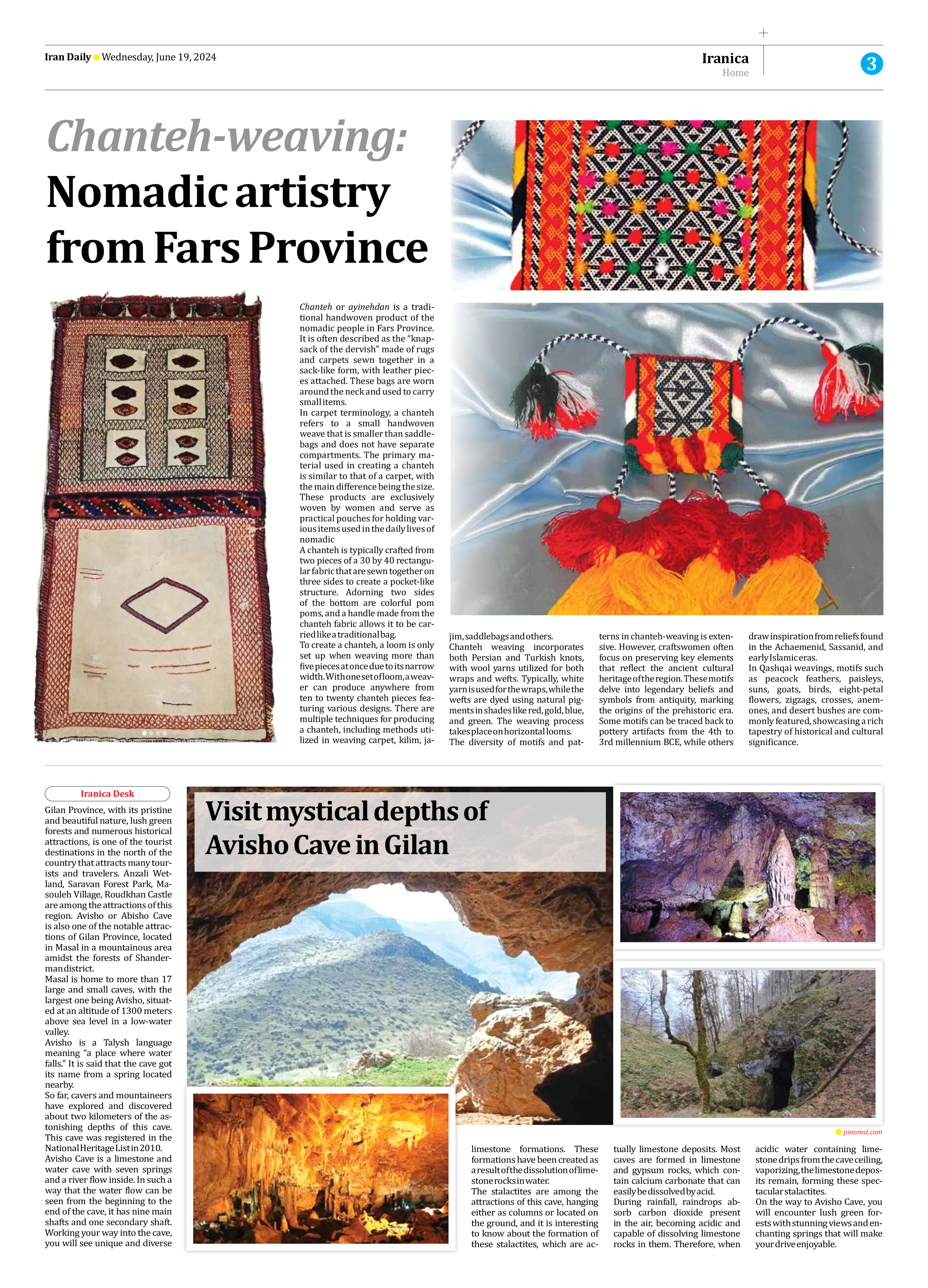
Chanteh-weaving:
Nomadic artistry from Fars Province
Chanteh or ayinehdan is a traditional handwoven product of the nomadic people in Fars Province. It is often described as the “knapsack of the dervish” made of rugs and carpets sewn together in a sack-like form, with leather pieces attached. These bags are worn around the neck and used to carry small items.
In carpet terminology, a chanteh refers to a small handwoven weave that is smaller than saddlebags and does not have separate compartments. The primary material used in creating a chanteh is similar to that of a carpet, with the main difference being the size. These products are exclusively woven by women and serve as practical pouches for holding various items used in the daily lives of nomadic
A chanteh is typically crafted from two pieces of a 30 by 40 rectangular fabric that are sewn together on three sides to create a pocket-like structure. Adorning two sides of the bottom are colorful pom poms, and a handle made from the chanteh fabric allows it to be carried like a traditional bag.
To create a chanteh, a loom is only set up when weaving more than five pieces at once due to its narrow width. With one set of loom, a weaver can produce anywhere from ten to twenty chanteh pieces featuring various designs. There are multiple techniques for producing a chanteh, including methods utilized in weaving carpet, kilim, jajim, saddlebags and others.
Chanteh weaving incorporates both Persian and Turkish knots, with wool yarns utilized for both wraps and wefts. Typically, white yarn is used for the wraps, while the wefts are dyed using natural pigments in shades like red, gold, blue, and green. The weaving process takes place on horizontal looms.
The diversity of motifs and patterns in chanteh-weaving is extensive. However, craftswomen often focus on preserving key elements that reflect the ancient cultural heritage of the region. These motifs delve into legendary beliefs and symbols from antiquity, marking the origins of the prehistoric era. Some motifs can be traced back to pottery artifacts from the 4th to 3rd millennium BCE, while others draw inspiration from reliefs found in the Achaemenid, Sassanid, and early Islamic eras.
In Qashqai weavings, motifs such as peacock feathers, paisleys, suns, goats, birds, eight-petal flowers, zigzags, crosses, anemones, and desert bushes are commonly featured, showcasing a rich tapestry of historical and cultural significance.







